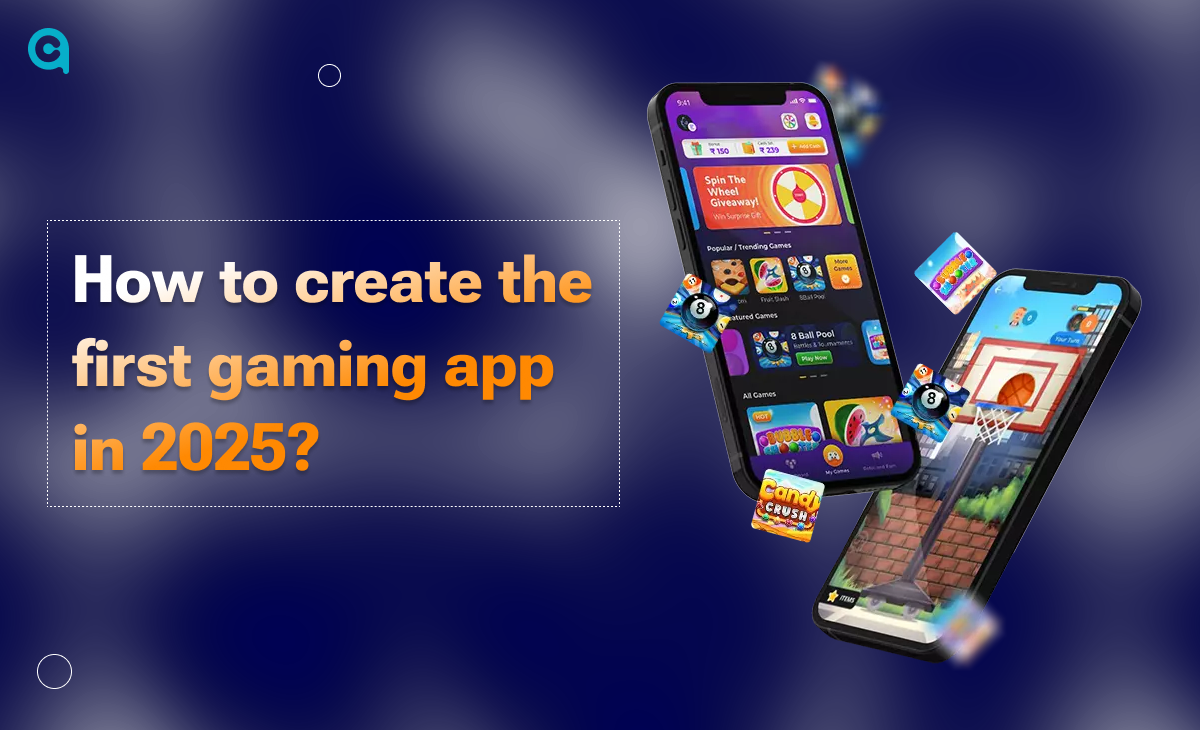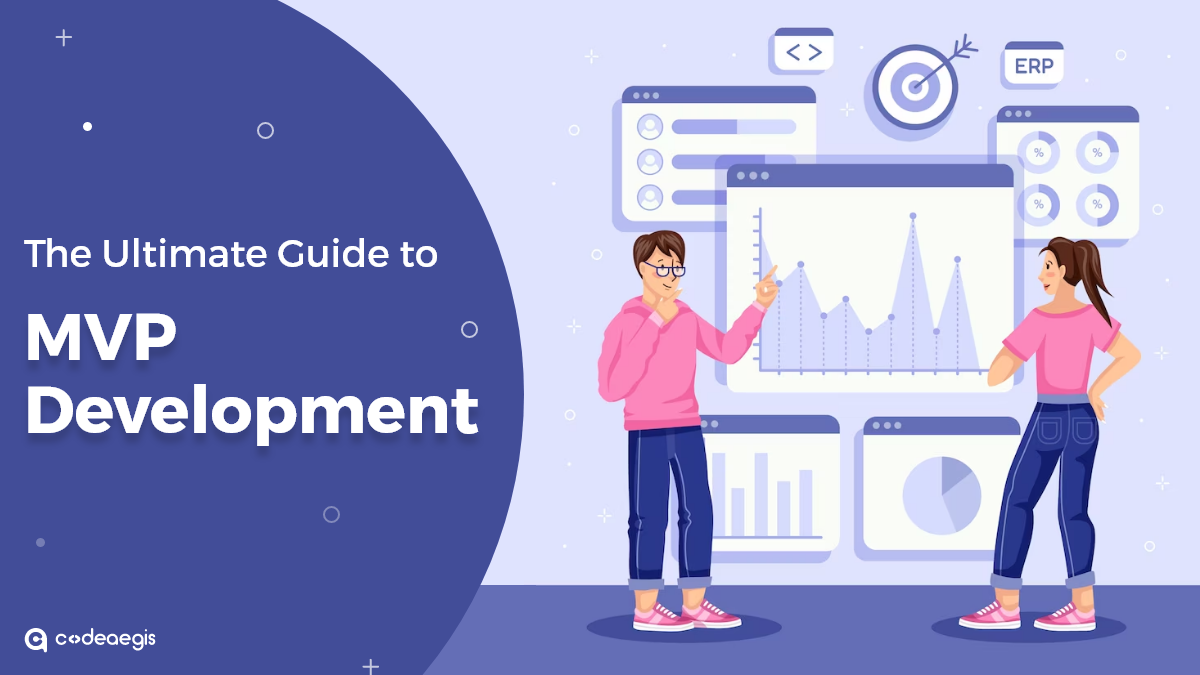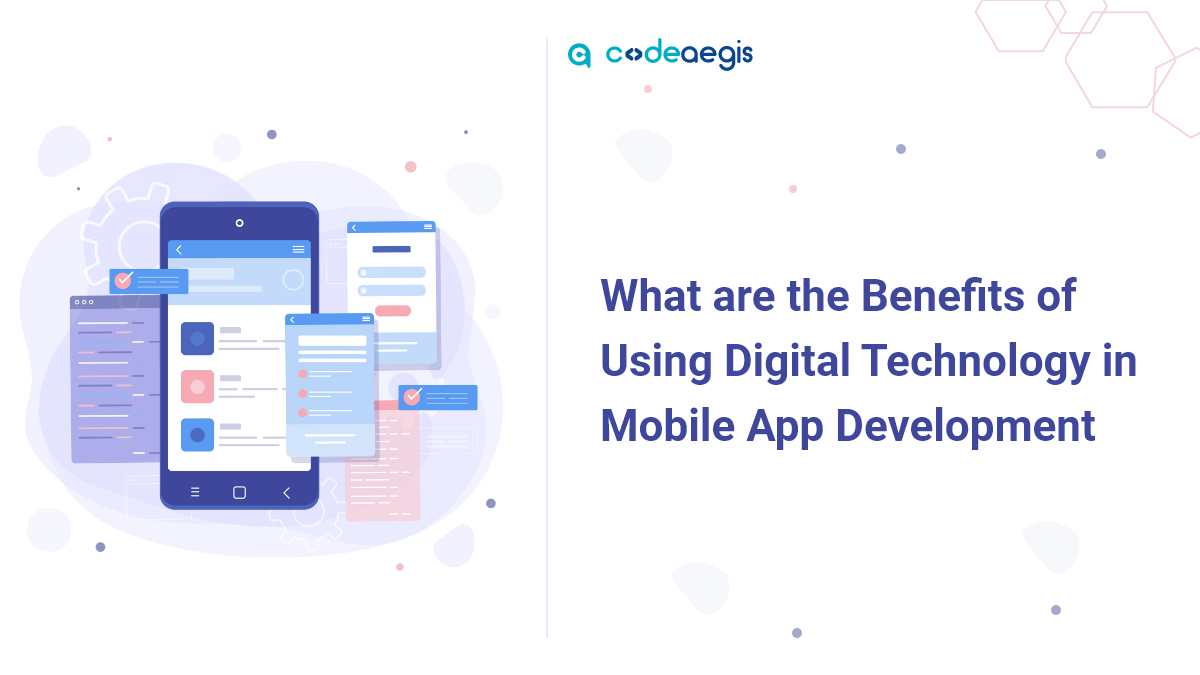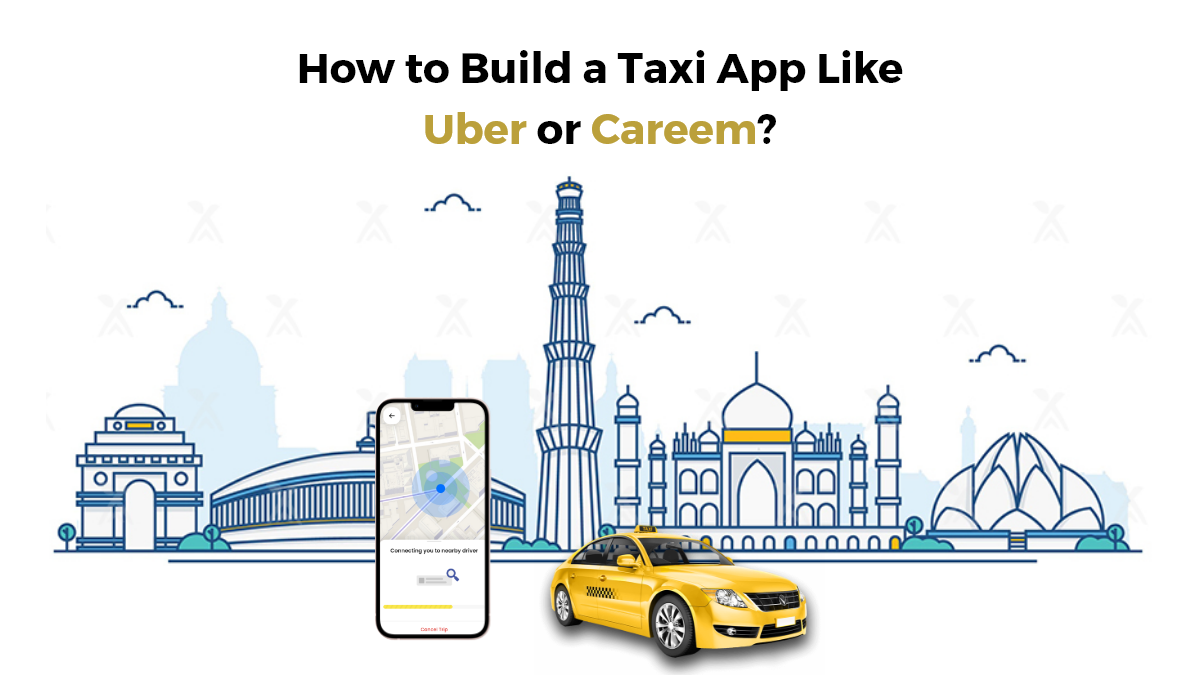





- January 03, 2023
- 36 Views
Social media apps are all the rage these days. People use them to connect with friends and family, to learn about new products and services, and to stay up-to-date on the latest news. But as popular as social media apps are, they’re not without their disadvantages.
One of the biggest problems is that they can be difficult to design and manage. In this blog post, we will show you how to design a social media app that’s both easy to use and popular among your target audience. By following our tips, you’ll be on your way to creating a successful social media app in no time!
-
Table of Contents
The Market for Social Media Apps in the UAE and other Middle East Regions is also growing. One of the Audio-Based Social Media Apps is Yalla. Founded in Dubai, Yalla is created in 2016 and reached its peak success publicly in 2020. Some features that can be picked or inspired by the Yalla App are mentioned below.

Market Size of Social Media Apps
- Total earnings in the Social Networking segment are predicted to touch US$43.39bn by the end of 2022.
- Total revenue is supposed to display a yearly growth rate (CAGR 2022-2026) of 8.57%, implying a projected market volume of US$60.29 billion by 2026.
- The standard revenue per download nowadays is predicted to amount to US$3.88
- The North America social networking app market is expected to grow dramatically.

How to Build a Perfect Social Media App?
Building a perfect social media app is not easy, but it’s not impossible. The key to success lies in understanding the requirements of your users and tailoring your product accordingly. To help you get started, here are eight core steps that will guide you through the process of social media app development:
Step 1: Find Out the Right Product
This is the first and most crucial step in developing an app. When creating a social media app, you need to identify the type of product that meets the needs and wants of your users. It could be a messenger app, a gaming platform, or any other social media-based service. It is important to note that your target audience will determine the type of product you choose.
Step 2: Create a Meaningful User Experience
Designing an intuitive user experience is critical for any successful mobile app. For social media apps, this means creating a design that reflects the values and goals of your users while also being visually appealing. A vital part of this step is choosing the right colors, fonts, and overall style to create an engaging platform for users to interact with each other.
Step 3: Implement Security Measures
Social media apps require high levels of security to protect their users’ data from being compromised or misused. Thus, when designing your app, it is crucial to include features such as two-factor authentication, encryption algorithms, and secure access controls that ensure only authorized individuals can access sensitive information.
Step 4: Incorporate Social Elements
Social media apps are all about staying connected and engaging with other users. Therefore, it is essential to include features such as direct messaging, commenting, sharing content, and creating user profiles that allow users to connect with one another. You can take the help of skilled mobile app developers for the same.
Step 5: Develop Engaging Content
Your app must provide exciting and informative content for users to stay engaged. This could be anything from news articles, blogs, or videos related to the topic of your app’s niche. It is significant to keep these pieces fresh so that people don’t lose interest in your product over time.
Step 6: Create an Advertising Platform
If you want your social media app to generate revenue, you need a way for companies or individuals to advertise their products or services within the platform. This can be done through sponsored posts, banner ads, or even by allowing companies access to specific data about your user base for targeted marketing campaigns.
Step 7: Monitor User Activity
It’s crucial to monitor your user activity and usage stats. This way, you can identify trends in user behavior and fix any issues causing a drop in engagement or content consumption. You should also track core metrics, such as clicks, likes, and shares, to know where the most successful posts are coming from.
Step 8: Analyze Your Data Carefully
Analyzing your data will give you insights into what types of content resonate with users when they’re using the app and how it could be improved for better performance. Look for patterns in user behavior to understand which features people love and where there’s room for improvement.
Features Your Social Media App Should Have
The competition in the social media space is fierce, and with more than 2 billion active users worldwide, it's no wonder why. Your app must offer features that other apps don't have to stand out from the crowd.
From basic elements like profile customization to unique features such as geotagging and augmented reality, there's a lot of potential for creative innovation when designing a social media app. Here are key features you should consider including:
- Profile Customization: Giving users the ability to customize their profiles allows them to express themselves and make their accounts uniquely theirs. This could include customizing backgrounds, avatars, or specialized profile sections for different topics or interests.
- Privacy Settings: Ensuring user privacy is paramount in today's world of data breaches and security concerns. Your app should include options allowing users to choose which content they want to share publicly versus privately with friends only.
- Push Notifications: Push notifications keep people engaged by letting them know when they have new messages or updates waiting on their accounts. It also keeps your app top-of-mind, so users remember to regularly check back in with what's happening on your platform.
- Geotagging: Geotagging allows users to attach their location to the content they upload, from photos and videos to status updates. This feature can be fun for some users but may also help businesses accurately target local campaigns and services.
- Custom Profiles: Offering custom profile options allows users to customize the look and feel of their accounts, creating a unique identity on your platform. You may even want to partner with brands or influencers who could create exclusive profile designs for your app.
- Photo-Editing & Filters: Photo editing features within the app give users tools like cropping, resizing, and filters that let them spruce up images before sharing them publicly or privately with friends.
- Connectivity With Other Apps & Services: Integrating other apps into yours is an easy way to boost user engagement by allowing people to access multiple platforms all within one place.
- Live Streaming Capabilities: Live streaming ads an exciting component to your social media app so people can watch real-time events right from their screens as they happen in the world around them.
- Gamification Elements: Gamification elements are great ways of incentivizing certain behaviors while keeping users engaged with your platform over time.
- Data Insights & Analytics: It is essential to understand how people engage with your app and what content they like or dislike. Your social media app should provide data insights and analytics to help you make informed decisions about improving the user experience.
- Mobile Support: In this day and age, any app must have mobile support so users can access their account from anywhere at any time. Ensure your social media app has a responsive design that works across all devices, including Android, iOS, tablets, etc.
- Security & Privacy: Also significant for any online platform are security measures such as two-factor authentication or encryption technology that help ensure user data is safe and private.
- Multi-Language Support: To reach a global audience, it's vital to offer multi-language support (i.e., Spanish, French, German). This will allow users to interact in their native language, creating an even better experience on your platform!
Tech Stack to Make a Social Media App

When building a social media app, the right tech stack is essential. The primary components of the stack are databases, programming languages, operating systems, frameworks, and libraries. Here is a list of some popular technology options for developing a social media app:
- Databases - MongoDB, MySQL, or PostgreSQL
- Programming Languages - JavaScript (Node.js), Python, or Ruby on Rails
- Operating Systems - Linux or Windows
- Frameworks - React Native or AngularJS
- Libraries - Bootstrap, jQuery, or D3.js
- Platforms & Tools – AWS EC2 for hosting services and Heroku for deployment services.
With this powerful combination of technologies, you can have a feature-rich mobile application that will meet your goals for performance and scalability.
By choosing the best tech stack to make your social media app come alive, you’ll ensure that you get maximum value from your investment in development time and cost while maintaining high levels of user engagement over time.
The cost of building a social media app varies greatly depending on the features and complexity desired. Generally, it can range from $50,000 to more than $1 million.
How Much Does It Cost To Build A Social Media App?
Factors such as platform selection (iOS vs. Android), back-end development services, designing user interface/experience, feature integration, and ongoing maintenance will affect the project's overall cost.
Additionally, if you plan to monetize your app with advertisements or in-app purchases, you'll need to factor that into your costs as well. It's important to remember that no two apps are alike, and there is not one single price tag that fits all projects when developing a social media app.
How Long Does it Take to Build a Social Media App?
The time it takes to build a social media app depends on the project's complexity and the resources involved. Generally speaking, you could expect an MVP (minimum viable product) to be built in 4-6 months if a single developer works on it with minimal features.
However, if additional features or more complex designs are desired, and multiple developers are involved, one can anticipate 8-12 months before completion.
Another factor that affects development time is the platform – iOS apps take longer than Android apps due to Apple's stringent quality assurance requirements and approval process for their App Store.
At each stage of development, from design and coding through User Interface/User Experience testing and launch, estimated timelines should be outlined, so all parties have expectations regarding progress toward completion.
Final Thoughts
That's all! Hopefully, this article has given you some insights on how to design a social media app that is popular. Keep in mind that there is no one-size-fits-all answer to this question, so take the time to research your target market and tailor your app accordingly.
Also, hire a professional social media app developer or an app development company if you're unsure of how to go about designing one on your own. In the end, making a great social media app is all about creating value for your users, and by following these tips, you'll be on your way to achieving success!
FAQs
What are the different types of social media apps?
Social media apps come in a variety of forms, including messaging apps, image and video-sharing apps, blogging platforms, and networks.
- Messaging apps like WhatsApp, WeChat, and Facebook Messenger allow you to communicate instantly with friends or family.
- Image and video-sharing apps such as Instagram, Snapchat, YouTube, and TikTok let you share photos or videos with your followers.
- Blogging platforms such as WordPress give users the ability to create an online presence by hosting their own blog posts,
- And social networks like Twitter enable users to post short messages called tweets.
All these types of social media applications offer various features that help us stay connected with our peers on the Internet.
Should I hire an app development company to build a social media app?
Yes, it is always a good idea to hire a professional app development company when you are planning to create your own social media app. These companies have the expertise, resources, and experience necessary to develop an effective and successful product.
How can I make sure my social media app is secure?
Security should always be one of the highest priorities when developing any application. To ensure your social media app is secure, you should consult with experts or hire an experienced software developer specializing in security solutions.
This will help protect your users' data from being accessed by unauthorized parties while also providing peace of mind knowing that their information is safe and secure within your system.
About Author
You May Also Like

You’ve likely heard the term “Artificial Intelligence” or AI until now—It’s 2025. But have you ever paused to consider how deeply AI has woven itself into the web of our

If you’re in the healthcare industry, then you know that data privacy and security are of utmost importance. In order to protect patients’ information, the Health Insurance Portability and

Are you looking to design a mobile app in 2025? Mobile application development is an ever-changing field, and it can be hard to keep up with the latest trends and best practices. But with this guide,

Table of Contents 1. What is Flutter? 2. Why Choose Cross-Platform Development? 3. Why is Flutter the Best Platform to Make Cross-platform Applications? 4. How Much Does it Cost to

The food delivery application has innovative, game-changing features that will transform the industry from the bottom to the top. According to Statista, the online food delivery market in the UAE has

Summary: Car rental apps have become the heart of the business, stimulating growth, efficiency, and customization. They offer updated rental methods to stay relevant with Gen Z and Millennials, who ar

Nowadays, the financial industry has encountered massive digitization, and mobile apps play a significant role in it. There are a wide variety of money transfer apps available, catering to the needs a

The launch of Node.js 19 is now available! It substitutes Node.js 18 as the current launch line, with Node.js 18 being encouraged to long-term support (LTS) next week. What do these two launches mean

When it comes to developing an app, there's a lot to consider. Not only do you need to create a user-friendly interface and design, but you also need to make sure your app is able to meet the demands

Is your business still relying on off-the-shelf software solutions that don’t efficiently meet your unique business requirements? If your mind instantly says yes, then let’s explore why in

With the advent of technology, the financial industry has experienced a massive transformation in the past few years. Fintech applications have revolutionized the way we manage and invest our money.

Application development is essential to fostering business efficiency while accepting new changes. Depending on the specific requirements, 85% of businesses rely on software development solutions to s

The gaming industry is proliferating with the advent of smartphones and PCs. Every age group, from children to adults, is well-engaged and fond of online gaming. The rapid evolution of mobile gaming a

Hiring a team of remote developers can be a daunting task, but it doesn't have to be. With a little bit of planning and the right approach, you can find the perfect candidates to build your dream prod

Mobile applications play a vital role in the development of multiple businesses in this digital world. Most companies are investing in iOS app development to strengthen their market appearance and dra

Imagine a world where you can speak your thoughts and desires, and the digital realm responds promptly, seamlessly integrating into your daily life. Whether you want to search for information, contro

The United Arab Emirates (UAE) is flourishing as the hub for blockchain technologies, transforming the digital ecosystem and having a forward-thinking government to maintain its competitive edge. Gove

Australia is moving towards a big shift at a global level. It is strengthening the ties at the B2B level and becoming a hub for innovation, sustainability, and digital transformation. Backed with a r
Have you ever felt like you’ve attracted 30% more consumers to your shopping sales by using a technical hack to revive your shops? It would work like a person was crossing through next to your

Having a mobile application is no longer a luxury—it's an essential tool for instantly capturing the market! To stand out in the rental businesses, a company must adopt tech-driven preferences

An extensive background working in Tech, Travel, and Education Industries. Currently involved in entire business operations process: Benefits strategy and implementation, systems integration, Human Re

Will DeepSeek and ChatGPT collide in the race for AI Supremacy? DeepSeek and ChatGPT are at the center of a heated debate that tends to shape the future of AI. The real-world implications and effecti

Prime Minister Narendra Modi eventually launched 5G in India at the 6th edition of the IMC (India Mobile Congress). Reliance Jio and other telecom organizations documented the various use cases of 5G

Blockchain technology is becoming the heart of multiple industries. It is robustly securing businesses through its core value, making it the first pick-up in the generative AIs. The blockchain is the

Rental businesses are gaining market share by offering essential services that help other businesses minimize downtime and maximize profitability. This growth trend is particularly strong in the servi

Blockchain technology and web development are two powerful innovations that have the potential to transform our world. While they may appear distinct, they share similarities and can work together to

Do you know what digital transformation with AI is and how it can impact your business? Organizations today are under pressure to digitally transform to stay competitive. This digital transformation

Businesses these days are looking to have an edge over their competition by having a strong online presence. A website is not enough anymore, and many companies are turning to mobile apps as a way to

The mobile app market has grown to a staggering size, with over 1.8 million apps available in the Google Play Store and Apple App Store combined. Mobile apps have become a necessity for people worldwi

Over-the-top (OTT) platforms like Disney Plus, Netflix, and Prime Video have gradually captured attention as traditional TV-watching methods have faded. Throughout the year, OTT platforms have created

Mobile app development is quickly becoming a necessity for businesses. As the world becomes increasingly digital, companies of all sizes rely on mobile apps to reach customers and increase customer en

Mobile applications have dominated the market, helping businesses to reinforce their full potential. Not only for the rental business, but mobile apps play a critical role in establishing a solid foun

The mobile app market has grown to a staggering size, with over 1.8 million apps available in the Google Play Store and Apple App Store combined. Mobile apps have become a necessity for people worldwi

Picture this - a world where business transactions are seamless, secure, and transparent. This might have seemed like a distant dream before the advent of cryptocurrencies and blockchain technology, b

Businesses after COVID are going through several changes, and the food industry is no different. Restaurants that have been doing dine-in are now struggling to keep up with the demand for delivery and

By 2024, we all know that technology will be the future. What excites me the most is that technology has covered all the dimensions of businesses, enabling them to attain their potential and efficienc
The beacon technology market was valued at 519.6 million U.S. dollars in 2016, and it was estimated to increase at a CAGR of 59.8% to reach about 56.6 billion U.S. dollars in size in 2026. Throughout

In today's digital world, businesses must keep up with ever-increasing consumer expectations and find new ways to engage their audience. That's where Progressive Web Apps (PWAs) come in. PWAs are a r

Depending on what niche you’re in, video chat apps are becoming increasingly common in the world of business and technology. Whether it’s a small startup company or a multinational corpora

If you’re planning to enter the fast-growing fantasy sports market, one of the most critical aspects considered is “What will it cost to build a fantasy sport that stands out and drives t

IPTV has established itself as a prominent technology that is gaining traction with its comprehensive platform applications. Unlike traditional methods like satellite, cable, or TV, IPTV has accelera

Have you ever found yourself in a situation where you desperately needed a product or service but didn't have the time or energy to go out and get it? Well, fear no more because on-demand delivery app

Imagine a classroom where history comes alive in the 3D model of historical events. Biology students can explore the unique complexities of a cell as they have practiced it with real-world examples, a

Over the past decades, the healthcare sector has continuously expanded its wings, moving from traditional to advanced technological processes. This evolution is driven by the sector's unwavering commi

Are you aware that the world is going through a significant shift in the way we make payments? According to a recent report by Deloitte, the total value of digital payments worldwide is estimated to r

Things have changed dramatically over the years with new opportunities, techniques, and future advancements. Real estate is the best industry to invest in, though the procedure sometimes irritates. Me

In recent years, the gaming industry has seen a surge in popularity, with many gamers turning to online gaming platforms and console games in order to escape reality. With so many people playing video

Want to establish a new business or improve an existing one? You should consider using blockchain technology Being a distributed database, Blockchain allows for secure online transactions. This techn

The introduction of online payment applications has changed how people perform financial transactions. A mobile phone with a banking app lets you quickly resolve various financial matters. Ta

DeFi is a new kind of investment that’s taking the world by storm. So what is it? Essentially, DeFi is a digital asset class that allows you to invest in cryptocurrencies and other digital asset

As blockchain technology continues to evolve, so too does the landscape of projects built on its foundation. The worldwide Blockchain market is predicted to expand at a CAGR of 42.8% (2018-2023), dire

Building an App that promotes businesses and acts as a right hand has a separate fanbase! Creating an app for the business plays a fundamental role in elevating business operations, making seamless c

Technology has come a long way in the past decade, and augmented reality (AR) is one of the most exciting development fields. AR technology superimposes digital content into the real world, creating a

As the world of startups becomes increasingly competitive, building an MVP is crucial for entrepreneurs looking to test their ideas and launch successful businesses. By creating a minimum viable produ

Blockchain technology has been a hot topic recently due to its potential to revolutionize various industries. Blockchain is a distributed ledger technology that ensures transparency, security, and dec

With the ubiquity of smartphones and tablets, it only makes sense that mobile app development - which is the process of creating applications for smartphones and tablet devices - is becoming more popu

The two hottest frameworks in the mobile app development world are Flutter and React Native. They’re both cross-platform solutions that allow you to write code once and deploy it to Android and

The healthcare industry is one of the most rapidly changing and growing industries worldwide. Mobile devices and apps have drastically changed how providers and patients interact and communicate.So, i

When it comes to mobile app development, one of the most important things you need to consider is the prototyping process. This will allow you to create a working model of your app so that you can tes

The world of gaming is rapidly evolving, and the latest buzzword is "metaverse." The term refers to a virtual world where users can interact with each other and digital objects in real time, using imm

The UAE, and Dubai specifically, has really evolved from just a real estate and tourism market, and is quickly becoming a hub for digital innovation and online commerce. With the continued investment

Lately, the tech world has been abuzz with talk of the Metaverse, a groundbreaking concept that promises a shared virtual space where people can interact and engage with one another. This futuristic i

The world is digitizing at a very rapid pace, and in such a scenario, real estate businesses must also go digital to stay ahead of the competition. One of the best ways to digitize your business is de

As we head into the future, more and more people are looking to find ways to improve their healthcare. And with good reason - healthcare can be expensive, and it can be difficult to get the right care

Did you know that Dubai's prime residential market is projected to experience the world's strongest growth in 2025? The Middle East is buzzing with opportunities, especially in the realm of mobile app

Do you run your own business and want to build an Android app? If yes, you must know about the latest technology trends playing a significant role in the android app development process. Technology i

Gone are the days when people used to wave down a taxi on the street or wait for one at the airport. With the advent of technology, people can now book a taxi with just a few taps on their smartphones

In the last few years, wearables have become increasingly popular. Fitness trackers, smartwatches, and even smart glasses are becoming more and more commonplace. And as the technology improves and bec

Can you give thought to a week without coffee breaks at cafes? It might not be possible, but earlier, having coffee outside the house was never a thing. So how the tables have changed the corners?

Table of Contents 1. What is ChatGPT? 2. What Are the Top Benefits of ChatGPT? 3. How Does ChatGPT Work? 4. Challenges With ChatGPT 5. ChatGPT and the Future of AI 6. Final Thoug

It's no secret that the digital world has transformed many aspects of our lives, and it is only going to continue changing in ways we can't even imagine yet. To help businesses keep up with this rapid

Generative AI? Is this still a question mark to you? If you don’t know what generative AI does, that would be a fair question, but it was not if you said that you haven’t interacted with

Decentralized Finance (DeFi) is a modern and evolving region of finance that is less centralized and more open to innovation and collaboration. DeFi enthusiasts laud its prospect of disrupting convent

Social media apps are all the rage these days. People use them to connect with friends and family, to learn about new products and services, and to stay up-to-date on the latest news. But as popular a

Augmented Reality and Virtual Reality are the two leading buzzwords in the technology era. What began as a completely new, significantly different technology has rapidly revolutionized into something

Sipping coffee and thinking of a startup has always been trendy. Similarly, hanging out with friends and promising them to start a business someday feels refreshing. Did you know that several success

Nowadays, the digital presence has revolutionized business dynamics. App development is not just evolving but breaking traditional barriers and emerging as strong and progressive solutions. With robus

The startup space is fast, competitive, and harsh. According to Exploding Topics, about 90% of startups fail. What would be the reason for that? There would be multiple reasons for startup failure, bu

Picture this: a world where traditional banking transforms into a cutting-edge, efficient, and transparent system that leaves everyone in awe. Blockchain, often met with skepticism and uncertainty, is

The rise of online video streaming services has revolutionized the entertainment industry, prompting businesses worldwide to explore the possibility of launching their own platforms. With giants like

Necessity is the mother of invention origin! Have you ever wondered when an entrepreneur decides to start a business? When demand is high and supply is low, opportunities arise. But there’s mor

Do you want to build a simple app for your business? Do you want to create an app that enhances the experience of users who play games on their smartphones? Whatever your reason, I have created this g

Google released Android 13 beta 4 to the public, and with it comes a slew of new features and updates. In this article, we'll walk you through everything you need to know about the latest version of A
Leave a Reply
Your email address will not be publishedDO YOU HAVE ANY PROJECT
Let's Talk About Business Solutions With Us
India Address
57A, 4th Floor, E Block, Sector 63, Noida, Uttar Pradesh 201301
Call Us
+91 853 500 8008
Email ID
[email protected]





.jpg)





